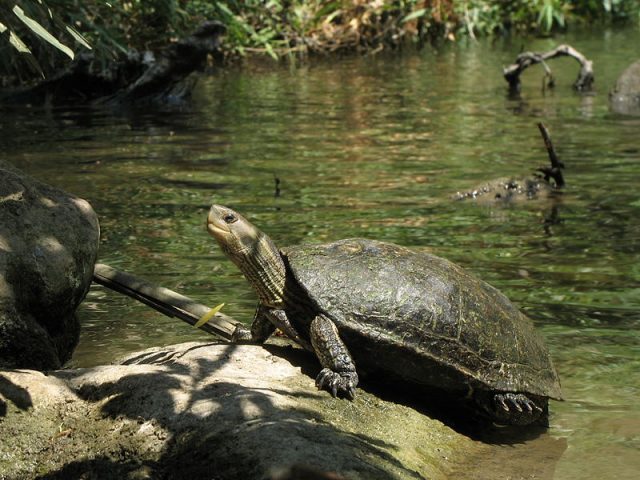| Place of Origin and Range |
Found in eastern Mediterranean region from south western former USSR and central Iran to Saudi Arabia, Bahrain, Israel, and Lebanon, northward through Turkey to Bulgaria, and through Cyprus, Crete, and the Ionian Peninsula to former Yugoslavia. |
| Description |
This is a tan to blackish, medium-sized, semi-aquatic turtle.Its low, oval carapace has a slight medial keel (better developed in juveniles) and a smooth, un-serrated marginal border, which is slightly upturned and tapered above the tail. A pair of low lateral keels are present on the pleural scutes of hatchlings, but these become lower with age and disappear completely in adults. The carapace is tan to olive or black with yellow to cream-coloured reticulations patterning the scutes, and some individuals have yellow vertebral stripes. These light lines fade with age but the pleural seam borders become darker. The well-developed plastron is notched posteriorly. |
| Morph Patterns Available |
Yes |
| Adult Size |
Can grow up to 10 in (25 cm) |
| Accommodation |
These turtles thrive in a fenced garden pond. A filtered aquarium with water temperature at 70-80'F(21-26'C), and a sloping ramp(driftwood, textured plastic or some other non-abrasive surface) leading from the bottom to an illuminated and warmed basking spot. Approx 80'F(27'C). |
| Lifespan |
Can live 25+ years |
| Feeding / Diet |
It quickly juts its head into and out of vegetation to stir potential victims out into the open water, where they are pursued. Large prey it holds in its mouth and tears up with its forefeet. It also consumes plants and skims the surface of the water with its mouth open to catch small particles of food. Snails, crayfish, minnows, worms, insects, and prepared foods such as pelleted trout, catfish pellets, and koi goldfish pellets are all good choices. |
| Other Considerations |
Watch for theses health concerns carefully with your turtle. Vitamin A Deficiency: Vitamin A is an important nutrient for your turtle’s health. It is found in his diet in the form of leafy green, orange or yellow vegetables, liver, and fish. If your turtle is not getting enough Vitamin A, he can suffer serious health problems. Always check to make sure that your turtle does not have swollen eyelids, as this is the main sign of a Vitamin A deficiency. Also, check for weight loss, nasal discharge and infected skin. Any of these symptoms could point to a deficiency. If you think your turtle may not be getting enough Vitamin A, you should take him to the veterinarian to get a firm diagnosis. Shell Problems: Your turtle’s shell is very important to his overall health. There are many potential problems that could occur, so you should be on the lookout at all times. Respiratory Disease: Respiratory infections have symptoms similar to vitamin A deficiency, including swollen eyelids and runny nose, so you should take your turtle to the veterinarian to get a proper diagnosis if you suspect either. More serious infections will be characterized by breathing through the mouth, mucus in the mouth, and wheezing. Always make sure your turtle’s environment has the proper amount of humidity, as this will help prevent respiratory problems. |




